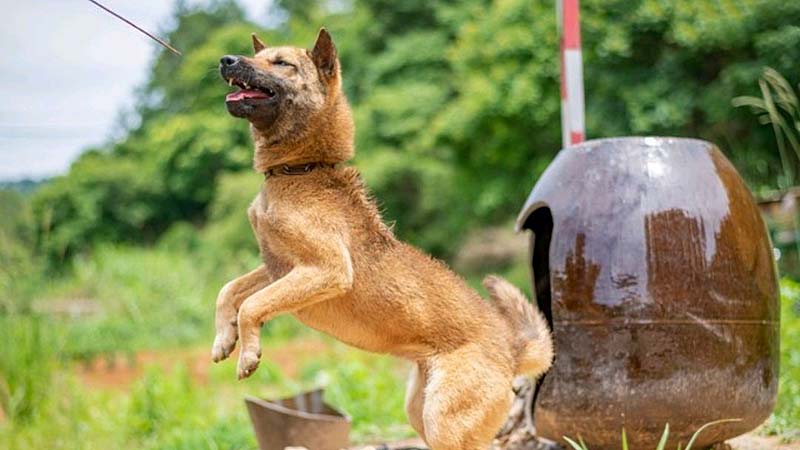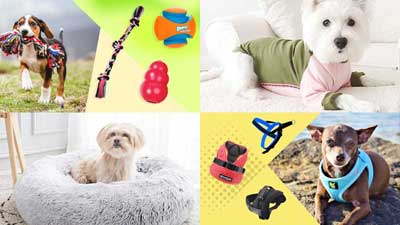- Size
- Smallest
- Small
- Small to Medium
- Medium
- Large
- Giant
- Characteristics
- Smartest
- Hypoallergenic
- Fluffy
- Best Guard
- Best Family
- Best for Kids
- Low Shedding
- Healthiest
- Police Dogs
- Most Calm
- Quietest
- Color
- White
- Black
- Grey
- Brown
- Blue
- Red
- Coat
- Hairless
- Short
- Long
- Origin
- Japan
- China
- Australia
- Germany
- Italy
- United States
- France
- Group
- Hound
- Terrier
- Herding
- Toy
- Working
- Sporting
Cultivating Control: Redirecting Your Dog's Jumping Behavior

Dogs, being naturally exuberant and social creatures, often express their excitement or desire for attention through jumping. While this behavior may stem from innocent intentions such as greeting or seeking interaction, it can become problematic or even risky if not addressed appropriately.
Why Dogs Jump
Puppies instinctively jump up to reach and greet their mothers, and this behavior can carry over into their interactions with humans. As dogs grow, they might continue jumping up as a means of expressing excitement, trying to reach an object in someone's hand, or simply seeking attention.
Challenges with Jumping Behavior
Though jumping is a dog's way of engaging and showing affection, it can be bothersome or hazardous. A jumping dog might accidentally knock over children, elderly individuals, or individuals with physical limitations. Additionally, while some methods may temporarily halt the behavior, they might not convey the desired message to the dog.
Effective Techniques to Curb Jumping
Numerous strategies exist to manage a dog's jumping, but not all are equally effective. Contrary to popular belief, methods like lifting a knee, grabbing paws, or pushing the dog away might not convey the intended message and could inadvertently reinforce the behavior.
1. The Power of Ignoring
The most potent technique in addressing jumping behavior is to ignore the dog completely when they jump. Turning away, avoiding eye contact, refraining from speaking or touching the dog, and even walking away if necessary, denies the dog the attention they seek. This lack of acknowledgment serves as a clear message that jumping won't elicit the desired response.
2. Consistency and Rewards
Consistency is crucial in modifying behavior. Everyone interacting with the dog should respond uniformly to avoid confusion. Furthermore, positive reinforcement plays a pivotal role in shaping desired behavior. Rewarding the dog with attention, treats, or praise when they remain calm and composed, rather than jumping, reinforces the message that good behavior is encouraged and rewarded.
3. Patience and Persistence
Training a dog to stop jumping requires patience and persistence. Dogs learn through repetition and consistency, so persistently ignoring the behavior and rewarding desirable conduct is key to long-term success. It's essential to remember that each dog is unique, and the time required to modify behavior may vary.
Conclusion
Addressing a dog's jumping behavior involves understanding the root cause and employing effective training techniques. Ignoring the behavior, rewarding calmness, and ensuring consistent responses from all individuals interacting with the dog are vital steps toward encouraging desirable behavior. With patience and consistent training, most dogs can learn that maintaining composure results in positive attention and rewards.
You May Also Like
 Dog BehaviorThe Reasons Behind Canine Digging and Effective Solutions
Dog BehaviorThe Reasons Behind Canine Digging and Effective Solutions Dog BehaviorUnderstanding Dog Chewing: Causes and Solutions
Dog BehaviorUnderstanding Dog Chewing: Causes and Solutions Dog BehaviorCommon Instigators of Excessive Dog Barking
Dog BehaviorCommon Instigators of Excessive Dog Barking Dog AttacksWhen Dogs Attack: Holding Pet Owners Accountable for Personal Injuries
Dog AttacksWhen Dogs Attack: Holding Pet Owners Accountable for Personal Injuries Useful Accessories9 Useful Accessories for Your Dog
Useful Accessories9 Useful Accessories for Your Dog Help & AdviceThese 10 Dog Breeds Novice The Best Not To Keep!
Help & AdviceThese 10 Dog Breeds Novice The Best Not To Keep!